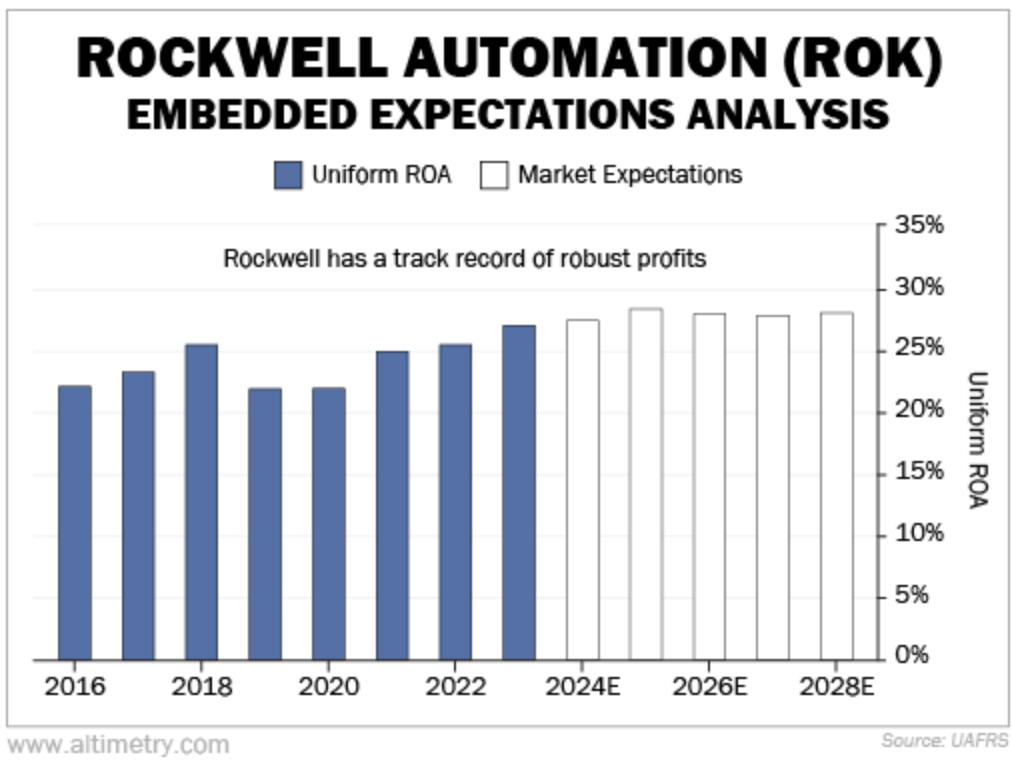Editor’s note: Here at the Chaikin PowerFeed, we’ve previously discussed the big trend of automation…
And over at our corporate affiliate Altimetry, so has our friend Joel Litman.
As regular PowerFeed readers know, Joel is Altimetry’s founder and chief investment strategist. And today, we’re turning things over to him with an essay adapted from a February issue of the free Altimetry Daily Authority e-letter.
As Joel explains, Japan’s aging population means a big tailwind for automation. And that’s not all – he also takes a look at a company that stands to benefit from the automation trend…
After 35 years, Japan’s stock market is finally reaching new all-time highs…
The Nikkei 225 Index – which serves as Japan’s version of the S&P 500 Index – finished at 40,369.44 on Friday. It has blown past its previous peak of 38,915.87, which it reached in 1989.
In other words, Japan’s stock market has pretty much been stagnant for the past three decades.
While the country is still one of the world’s largest economies, its glory days are behind it…
In addition to a sleepy stock market, Japan also has the fastest-aging population.
More than 1 in 10 people are aged 80 or older. Plus, the country has one of the lowest fertility rates in the world. The number of children a woman gives birth to in her lifetime has fallen from about 1.6 in 1989 to less than 1.3 on average today.
Those decades of sluggish growth are now finally catching up with Japan…
According to the Recruit Works Institute, the country is on the verge of a massive labor shortage. Japan’s elderly population (those aged 65 and older) is set to peak in 2042.
Meanwhile, its working-age population is rapidly declining. The institute estimates that Japan will be short 11 million workers by 2040.
Unfortunately, Japan’s economy is already feeling the effects of that shortage today. Essential sectors like nursing, transportation, and even education have fallen behind.
As I’ll discuss, Japan is racing to solve its demographic problem in a new and innovative way… and one company in particular is likely to be a big winner as a result.
Japan is replacing workers with robots and “avatars”…
It’s a bold move – and it’s taking place across various key sectors, like construction, agriculture, and automotive.
Robots are automating assembly processes in factories… tending to and harvesting rice fields… and helping move vehicles around at car dealerships.
And with the growth of AI, they’re even replacing jobs in customer service… One convenience store in Tokyo uses a technology called an “avatar” to greet customers and offer them advice on what products to buy.
The avatar is displayed on a 4-foot screen and is operated by a remote worker. Eventually, the store plans to have one person controlling several avatars at the same time. That makes staffing night shifts and operating in rural locations much easier.
Japanese companies are scrambling to invest in this technology – and they aren’t alone…
Many countries in Asia are also struggling with labor shortages and an aging population.
China’s population, for instance, is aging rapidly after years of the “one-child policy.” And South Korea, which has the lowest birth rate in the world, is forecast to become the “most aged” population by 2044.
As this trend continues, companies that work on robotics and avatars stand to benefit. Rockwell Automation (ROK) is a great example…
It’s one of the largest robotics companies in the world, specializing in machines and robots that automate industrial processes.
Its products are exactly what nations like Japan rely on as their workforces get older. In fact, Rockwell gets roughly 15% of its revenue from Asia.
Historically, business has proven stable, yet strong. We can see this through a specific analytics tool we use at my firm Altimetry – our Embedded Expectations Analysis (“EEA”) framework…
The EEA starts by looking at a company’s current stock price. From there, we can calculate what the market expects from future cash flows. We then compare that with our own cash-flow projections.
In short, this tells us how well a company must perform in the future to be worth what the market is paying for it today.
Over the past eight years, Rockwell’s Uniform return on assets (“ROA”) has risen steadily from already robust levels. Its Uniform ROA has climbed from around 22% in 2016 to 27% in 2023.
Take a look…
As countries like Japan continue investing in automation, Rockwell’s Uniform ROA should keep expanding. And yet, the market has recently priced in Uniform ROA to remain pretty much flat from here.
Investors are completely overlooking the huge tailwinds behind the automation trend.
Everyone is busy paying attention to the big AI plays… and overlooking companies like Rockwell that are positioned for huge profits.
It’s only a matter of time before they realize the massive opportunity.
Regards,
Joel Litman
Editor’s note: According to Joel, there’s another big opportunity unfolding right now in the market…
In fact, to share this story, he joined forces with another big personality in finance – Porter Stansberry, the founder of our corporate affiliate Stansberry Research.
In short, it all has to do with what Joel says is a “historic anomaly” that means a once- or twice-in-a-lifetime opportunity for investors.
Get all the details from Joel and Porter – and find out how they say to take advantage of this setup – right here.
